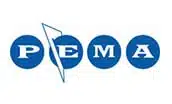Screw Conveyor Trough Liners
Screw conveyor trough liners enhance the performance and service life of a screw conveyor. Liners improve efficiency when conveying very free-flowing or fluidizing bulk materials on steep inclines by reducing the clearance between the screw and housing. Liners also provide a low friction surface to reduce adhesion when conveying sticky bulk materials. Trough liners also act as a bearing surface when intermediate hanger bearings are eliminated in conveyors using close-coupled and clocked or shaftless screws. Most commonly, trough liners provide a wear surface to increase the longevity of the trough or housing.
Selection of the appropriate liner material and attachment method is critical to ensuring a low maintenance screw conveyor. KWS utilizes extensive experience and an application database when selecting trough liner materials for a specific application. We have developed a secure liner attachment method that simplifies installation and replacement. As we are not limited to proprietary or own-brand liners, we review the requirements in an unbiased and commercially efficient way to ensure the best match for the job.
Screw conveyor trough liners available from KWS include: Ultrahigh Molecular Weight Polyethylene (UHMW), Polyurethane, AR235, AR400, Alumina Silica Ceramic, Nitronic 60
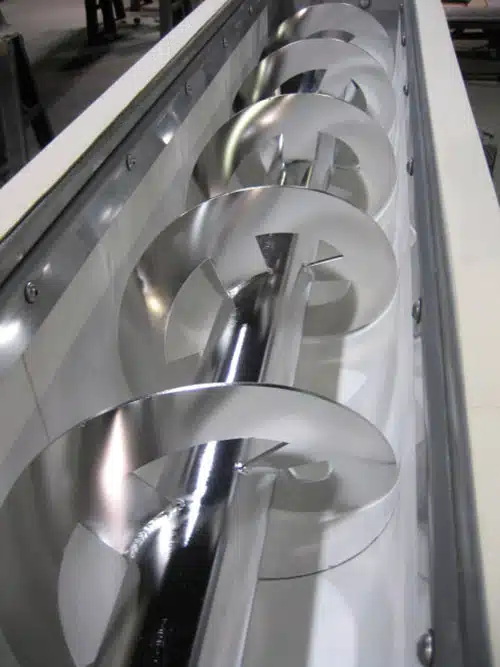
Full Length Clips are Bolted Along Top of Trough to Secure Liner
Features
Variety of Materials –
- UHMW – Engineered plastic with low coefficient of friction. Relatively slow wear for most applications where bulk material conveyed has some liquid or sticky properties.
- Polyurethane – Engineered plastic with similar attributes of UHMW, but more abrasion resistant. Typically used for moderately abrasive bulk materials.
- AR235 – Hardened steel with Brinell Hardness (BHN) between 200-250, 98-percent harder than A36 carbon steel. Typically used for moderately abrasive bulk materials.
- AR400 – Hardened steel with Brinell Hardness (BHN) between 360-440, 236-percent harder than A36 carbon steel and 70-percent harder than AR235. Typically used for highly abrasive bulk materials.
- Alumina Silica Ceramic – Ceramic tiles can be vacuum or epoxy bonded directly to trough or substrate. Typically used for extremely abrasive bulk materials.
- Nitronic 60 – Anti-galling and wear-resistant austenitic stainless steel with superior corrosion resistance. Excellent high temperature oxidation resistance significantly outperforming 304 and 316. Typically used for high temperature and extremely abrasive applications.
Liner Attachment Methods – Several methods are available for securing screw conveyor trough liners. Engineered plastic liners such as UHMW and Polyurethane are held in place by equally spaced stainless steel blocks or full-length clips bolted intermittently along the top edges of the trough to allow for thermal expansion of liners. The edges of the trough liner are sealed using a silicone sealant to prevent bulk materials from migrating under the liner. Metal liners such as AR235 and AR400 are stitch-welded or bolted to the trough for easy removal and replacement.
Benefits
Simplified Replacement – All KWS liner attachment systems securely fasten liner sections to the trough while allowing liners to be removed and replaced quickly.
Reduced Downtime and Maintenance – KWS trough liners are selected based on the requirements of the application to ensure that downtime and maintenance are minimized. Trough liner life can be as high as five years depending on application and duty cycle.
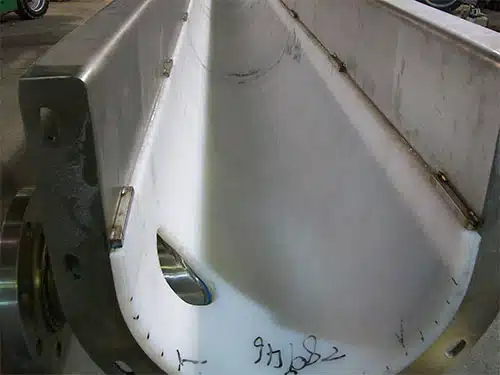
UHMW Liner Secured with Weld-In Blocks
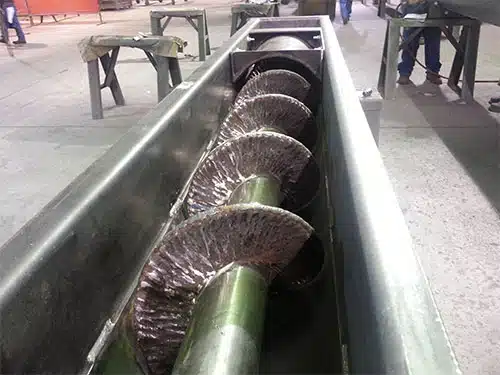
AR235 and AR400 Metal Liners are Stitch-Welded to Trough for Easy Removal
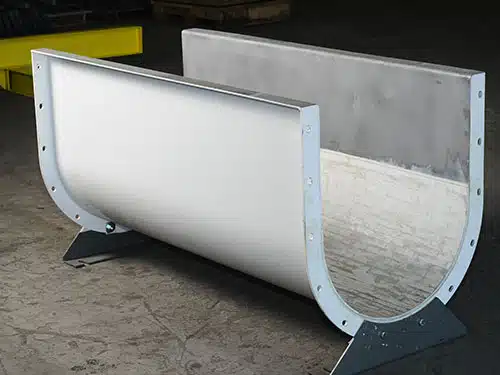
Ceramic Tiles are Epoxy Bonded Directly to Trough for Extreme Abrasion Resistance
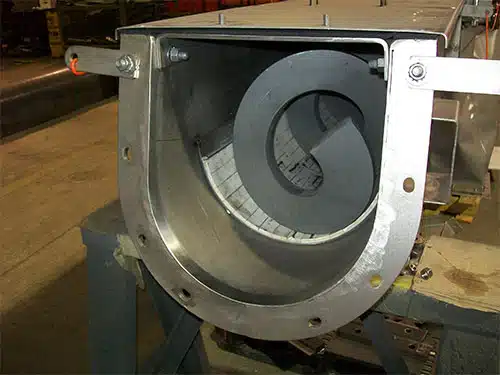
Ceramic Liner is Bonded to Substrate for Easy Replacement


